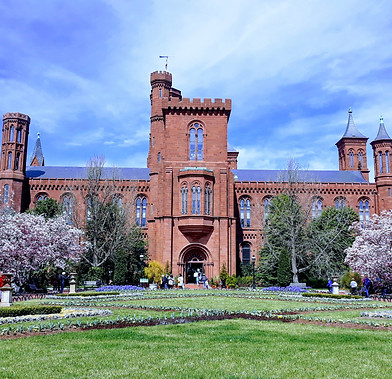top of page
ABOUT PROGRAM


In 2005, the Smithsonian Science Education Center (SSEC) began summer academies, called the Smithsonian Science Education Academies for Teachers (SSEATs). The SSEAT Academies provide teachers with an opportunity to take part in a week-long professional development course behind-the-scenes at Smithsonian museums and other world class research facilities throughout the greater Washington, DC area. The academies help to bridge the gap between the formal science education programs of the SSEC and the informal science education that exists throughout the Smithsonian, and combine training in science pedagogy with content presented by scientists and researchers who are experts in their fields.
Each SSEAT academy engages 20-30 teachers from grades K–12 over a week. Each day, participants engage in carefully selected science experiences directly related to concepts addressed in the content and pedagogical training, and guided by scientists, curators, and educators from a variety of facilities including the Smithsonian. The goals and design of the Academy align with the Smithsonian’s goals and the Smithsonian’s Strategic Plan for Science. The Smithsonian Institution strongly supports the initiative, which it sees as complementing its education outreach work of promoting and providing a framework for the participation of their staff in the professional development of teachers.
This year we introduce a new academy focused on Space Science by collaborating with the Harvard-Smithsonian Center for Astrophysics (CfA), for teachers in the Boston area. The Space Science SSEAT academy combines training in science pedagogy, including learning to integrate authentic tools of the space science, with content presented by scientists and researchers who are experts in the field of astronomy and space science.
Features of the Space Science SSEAT 2019 program:
1. One week-long unique PD programs specified in space science that are aligned to the Massachusetts Science Standards (will cover the concepts of seasons, lunar phases, eclipses, etc.)
2. Providing hands-on and digital learning experience that teachers can bring to classrooms
3. Incorporating the CfA developed authentic astronomy tools for science class to investigate the Universe: WorldWide Telescope & MicroObservatory
4. Incorporating the SSEC’s curriculum, Space Systems Exploration
5. Keynote sessions by distinguished scholars: Dr. Margaret Geller, Dr. Philip Sadler, and Dr. Alyssa Goodman
6. Field trips to the Chandra X-ray Operations Control Center, the CfA’s cutting-edge research labs, and the CfA’s old observatory and historical archives place
Our program includes the activities of:

WorldWide
Telescope
Integrating the digital source of the WorldWide Telescope with hands-on activity into the concepts of seasonal change, lunar phases, and eclipses

MicroObservatory
Operating remote robotic telescopes to capture the images of the Universe and learning about image processing as astronomers do for their research

Sun-Earth-Moon model
Sun-Earth-Moon model activity from the SSEC's curriculum, Space Systems Exploration, which is aligned to the NGSS and the Massachusetts Science Standards
bottom of page
